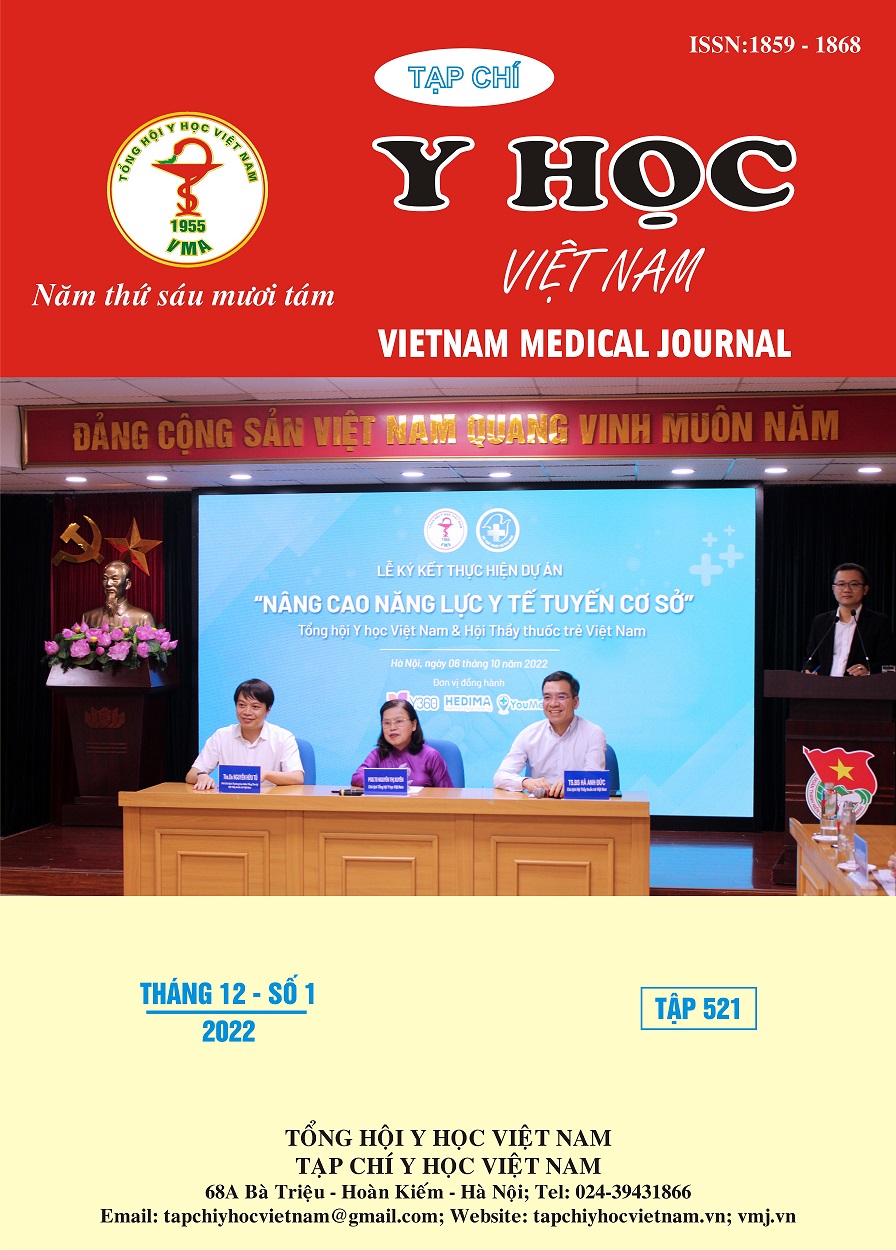EVALUATION OF VISCERAL ADIPOSITY INDEX IN RELATION TO CLINICAL, SUBCLINICAL FEATURES IN PATIENTS WITH STABLE ISCHEMIC HEART DISEASE
Main Article Content
Abstract
Objectives: To assessment of Visceral Adiposity Index (VAI) in relation to clinical, subclinical features in stable ischemic heart disease (IHD). Patients and methods: 50 patients with stable IHD and 30 individuals underwent calculated according to the formula based on anthropometric measurements and test results. Results: At baselines, the mean age of group stable IHD was 67.30 ± 10.48 and the group non – IHD was 64.7 ± 10.08. The median value of VAI in group stable IHD was 3.56 (1.9 – 5.42) higher than control group 2.2 (1.7 – 3.57), respectively. Median of VAI of females 4.6 (2.75 – 8.61) was higher than males 3.01 (1.83 – 4.57) with p < 0.05. In participants with and without diabetes, there was statistically significant different in VAI between groups, p < 0.05. No significant differences were observed among patient levels of chest pain by Canadian coronary score (CCS) and between two groups of heart failure (HF) and non – HF. Conclusion: In conclusion, VAI index in stable IHD was significantly higher than in control group. VAI associated with gender, diabetes but not with chest pain levels and HF.
Article Details
Keywords
Visceral Adiposity Index, stable ischemic heart disease
References
2. Phạm Vũ Thu Hà, “Nghiên cứu sự biến đổi chỉ số tương hợp thất trái – động mạch ở người mắc bệnh tim thiếu máu cục bộ mạn tính trước và sau can thiệp động mạch vành qua da” Luận án tiến sĩ y học, 2021.
3. Perk, J., et al., European Guidelines on cardiovascular disease prevention in clinical practice (version 2012). The Fifth Joint Task Force of the European Society of Cardiology and Other Societies on Cardiovascular Disease Prevention in Clinical Practice (constituted by representatives of nine societies and by invited experts). Eur Heart J, 2012. 33(13): p. 1635-701.
4. Amato, M.C., et al., Visceral Adiposity Index: a reliable indicator of visceral fat function associated with cardiometabolic risk. Diabetes Care, 2010. 33(4): p. 920-2.
5. Han, L., et al., Visceral adiposity index score indicated the severity of coronary heart disease in Chinese adults. Diabetology & metabolic syndrome, 2014. 6(1): p. 143-143.
6. Mahalle, N., et al., Study of pattern of dyslipidemia and its correlation with cardiovascular risk factors in patients with proven coronary artery disease. Indian J Endocrinol Metab, 2014. 18(1): p. 48-55.
7. Mahalle, N., et al., Association of metabolic syndrome with severity of coronary artery disease. Indian J Endocrinol Metab, 2014. 18(5): p. 708-14.


